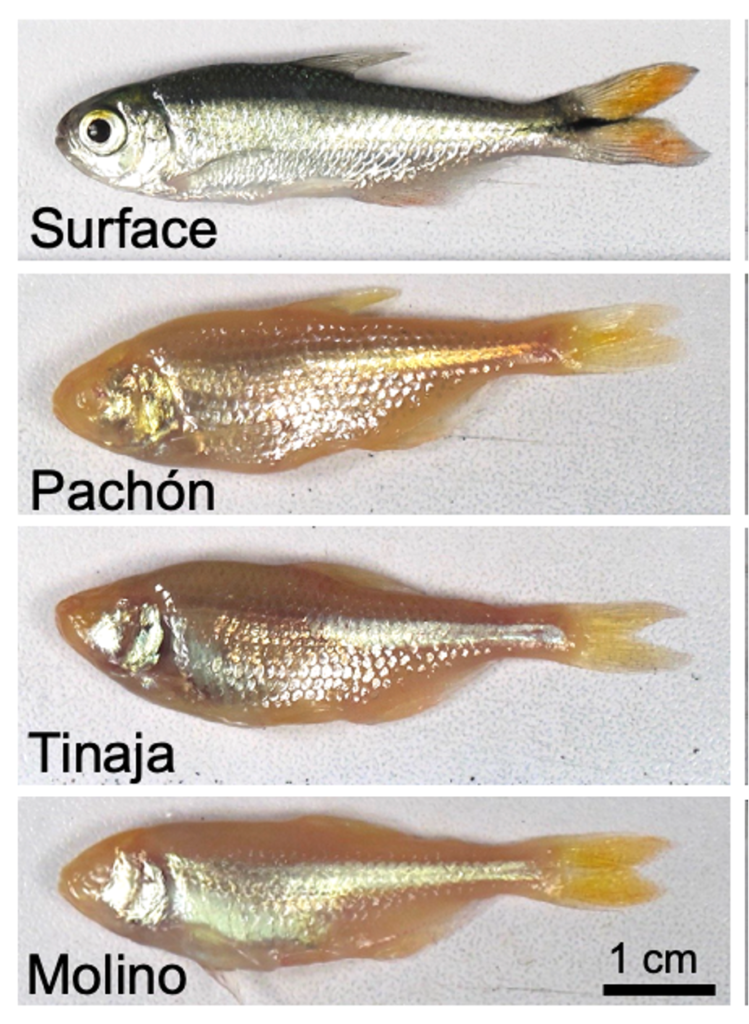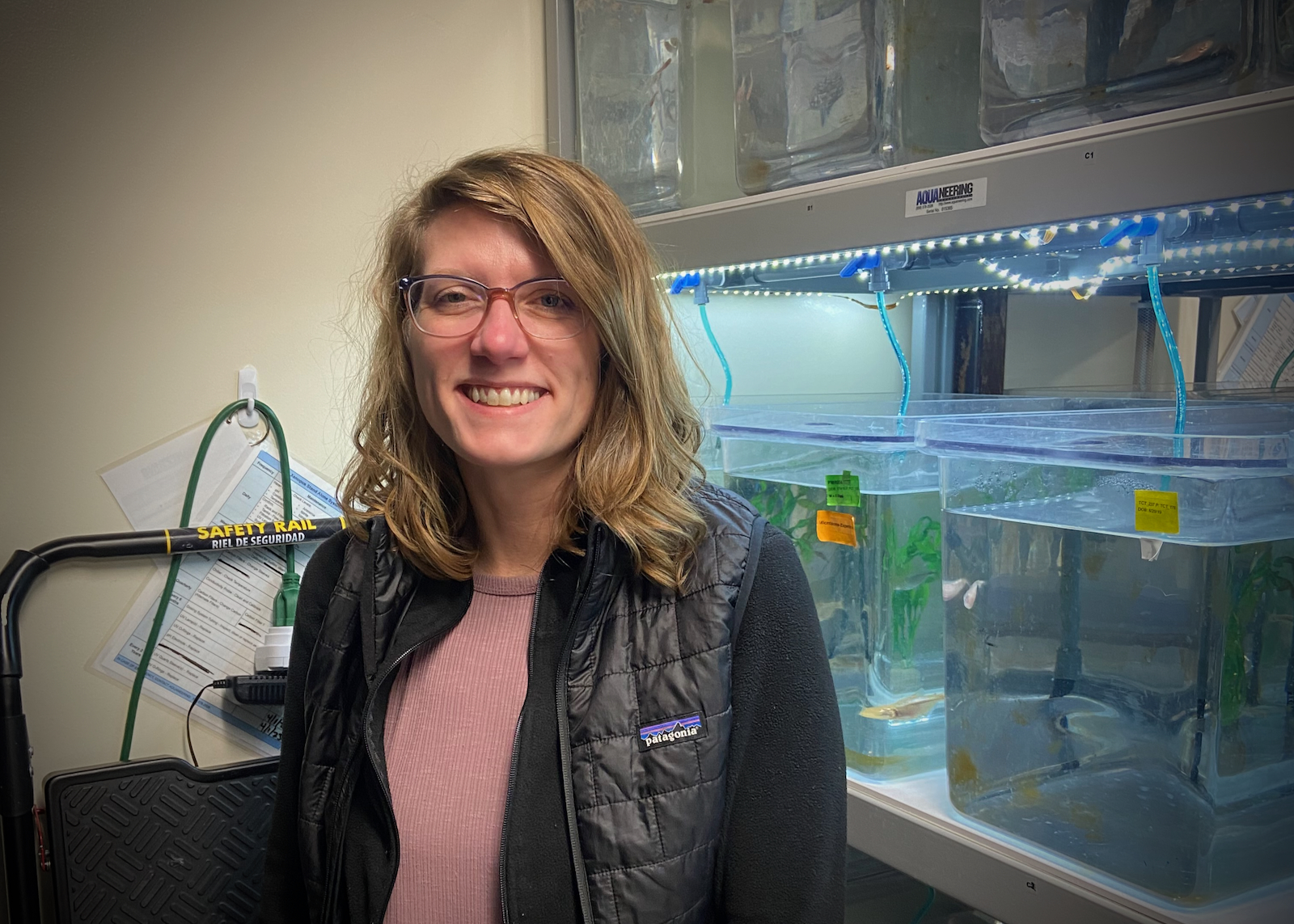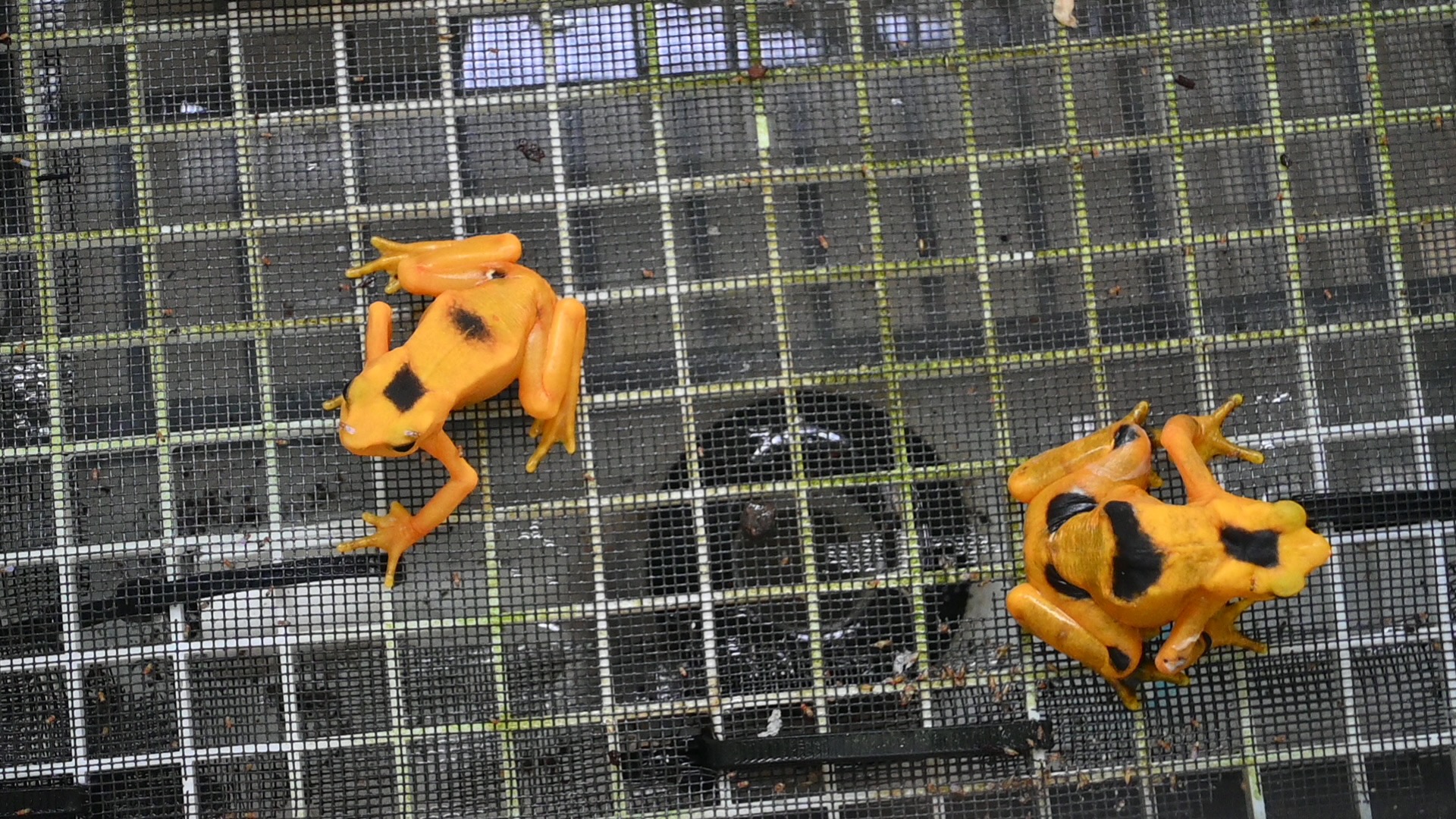Many people might not expect that a perfect candidate for studying evolutionary processes would be completely blind and prefer a meal of bat guano over insects, but Misty Riddle, PhD., an assistant professor in the Department of Ecology, Evolution, & Conservation Biology at the University of Nevada Reno, found her perfect organism to research in a fish called the Mexican tetra (Astyanax mexicanus).
Riddle set up her lab, the Riddle Laboratory, three years ago to study differences between the cave-dwelling Mexican tetra and its river-dwelling ancestor, and how different genetic changes allow them to survive in unique cave environments. Hitchcock Project reporter Elizabeth Walsh recently spoke with Riddle to learn more about her research on why this species of fish makes a perfect model organism.
This interview has been edited lightly for length and clarity.
Q: Can you tell me a little bit about your research and what you study?
A: We study the Mexican tetra, which is a species of small fish found in northeastern Mexico, and it exists as these two morphotypes (varieties), a river-dwelling morphotype and a cave-dwelling morphotype. The river-dwelling fish have eyes and pigmentation. It’s a pretty typical-looking fish. The cavefish are found in these underground limestone caves, and they don’t have any eyes. They’ve also lost pigmentation. There are actually multiple instances of surface fish getting trapped in caves, and then the cavefish evolved there for around 200,000 years.
And so, we have these different cavefish populations in the lab. We can study their traits, essentially, what genetic differences they have from surface fish, and what genetic differences they have from each other. So, we’ve been focused on their physiology (how their bodies function) and their metabolism (how their bodies process food and energy).
The diet that the cave fish eat is very different from the river fish. They eat things like bat guano and flood debris, and river fish eat insects. We’re looking at their metabolism. So, we found they accumulate a lot more fat than the surface (river) fish. Even if you keep them on the same lab diet, they have differences in the morphology (form) of their gastrointestinal tract. And then, more recently, we’re starting to look at their microbiome, or their gut bacteria.

Q: What got you interested in studying Mexican tetra?
A: I knew that I was really interested in understanding development biology, the study of how animals like the Mexican tetra grow and develop. I was also interested in studying the way that evolution can lead to such amazing biological complexity, by looking at the natural diversity that already exists. Then from that natural diversity, trying to understand the genetics of what drives the natural diversity. In my lab, we use Mexican tetra as a model organism to understand how the fish have developed the genetics for the diversity that we see between the different forms.
Q: What is a model organism, and what makes the Mexican tetra a good model organism?
A: A model organism is an organism that is used to study a particular problem due to its unique characteristics, like short generation time, ease of growing in the lab, or being able to study or change the genes of an organism.
The post-doc lab I joined already had this model system, the Mexican tetra, kind of up and running. And so, I said, like, this is perfect. This is exactly what I was looking for. We have this extreme natural variation, so, we can compare the genetics of these fish, but we can also interbreed them and do genetic mapping studies, and that’s a really useful way to connect natural variation to genetic changes. Then, on top of that, similar to these other more traditional model organisms, we can do things like CRISPR gene editing and do those types of experiments where we’re just like getting rid of a gene completely and seeing what happens. So that’s why I fell in love with this as a model system.
Q: Did people start studying the Mexican tetra and discover this makes a really good model system, or were people already looking for a good model system?
A: Mexican tetra were first discovered back in the 1920s, I think, by people who were just going into caves and mapping caves. And then they saw these, weird fish, and the first person who brought them back into the lab…they’re kind of looking at the skull and trying to figure out how this eye loss happened. Most of the labs that started studying the fish really focused on eye loss and pigmentation loss. And then as it became feasible to actually have the fish in the lab, and people figured out how to breed them in the lab, then [research] could start to gain traction as you can actually work with this as a model system versus having to go into the field. Which, I’m not a diver. If I couldn’t rear (raise) them in the lab I wouldn’t use them as a model system.
The work of that early cohort of researchers establishing methods to actually have them in the lab is part of what developed them as a model system. And then also developing the information about their genome. Once their genome was sequenced and annotated, that gave us additional information that made them a good model system. And really, I think another important thing is the sense of community. So, if you have, you know, multiple labs, but they’re all very aggressive towards each other and are not willing to collaborate, then you can’t really get established because people aren’t connected to being in that community as well. And it sort of slows progress. And so, it’s a tight-knit community. People are very supportive. And so that’s also been a part of what has made them a great model system.
Q: As far as I know, cave systems don’t fluctuate a lot in terms of the environment. Are you seeing effects on the cavefish and specifically Mexican tetra from human development and climate change?
A: That’s a good question. So, we don’t have a lot of information about how the dynamics in the cave have changed over time, but you’re right that caves tend to be stable, especially compared to the rivers we have. There’s a researcher where I did my postdoc who was looking at the temperature preference of the fish and put some data logging probes in the caves to see how temperature fluctuated over a year. As you would expect, the caves were relatively stable. Whereas the rivers [temperatures] were up and down seasonally, and also, of course, throughout the day.
So, in that regard, over the course of the year, caves are more stable. But in terms of what’s going to happen as the climate changes, that’s unclear. Many of the caves are subject to seasonal flooding. One part of climate change is you have certain changes in the rainy season versus the dry season, and things getting more dramatic that way. So that will certainly affect some of the caves that are at low-lying positions where they’re impacted by flooding and dry spells.
But cavefish are so robust – they’re happy if they’re not eating, they’re happy if they’re eating – that they’re sort of resilient in the face of these changes. One of the things that another postdoc in the lab and I proposed is that Mexican tetra are a good model system to study because it’s like you’re studying what happens when you take a fish or an organism and thrust it into an environment that’s dramatically different than what it’s used to. Which that’s kind of what’s happening to a lot of species now with climate change. So, what are the genes that they already had that help them keep going? And then, what are the genetic changes that make them more robust in the face of variation?
Q: Is there anything else that you want people to know about your research?
A: I’ve been at UNR for three years now. I have a really great group of students. So, there are four graduate students in my lab who all have different projects. So, we work on the microbiome, we look at vitamin A, metabolism, the evolution of the entire nervous system, and the development of the gonad as well. I have an undergraduate in the lab who is doing work on creatinine metabolism, kind of linking back to the gastrointestinal tract. So, I guess I would just encourage people to learn about the research going on at UNR and try to get involved with it.
More information
For more information on the Riddle Laboratory, please visit: https://www.riddlelab.org/
Elizabeth Walsh is a Ph.D. candidate in the Biochemistry Department at UNR, where she studies mosquito biology with the Rueckert Lab. She conducted this interview for the Hitchcock Project’s science reporting course during Spring 2024.






